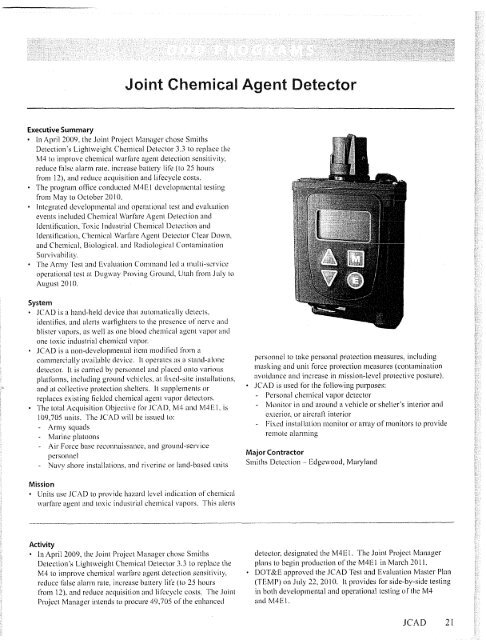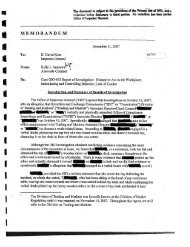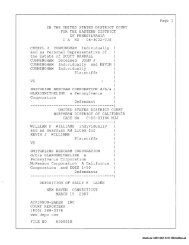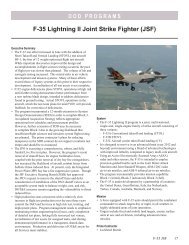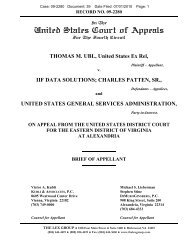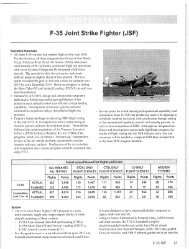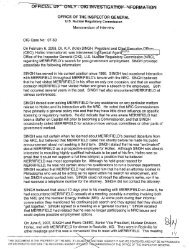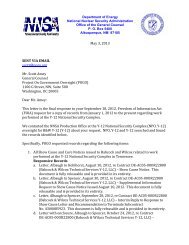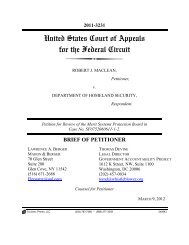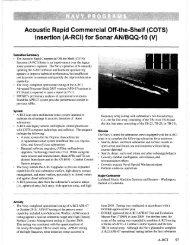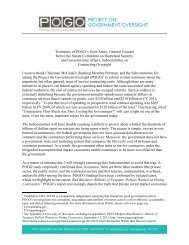F-35 Joint Strike Fighter (JSF)
F-35 Joint Strike Fighter (JSF)
F-35 Joint Strike Fighter (JSF)
You also want an ePaper? Increase the reach of your titles
YUMPU automatically turns print PDFs into web optimized ePapers that Google loves.
<strong>Joint</strong> Chemical Agent De ector<br />
Executive Summary<br />
• In April 2009. the <strong>Joint</strong> Project Manager chose Smiths<br />
Detection's Lightweight Chemical Detector 3.3 to replace the<br />
M4 to improve chemical warfare agent detection sensitivity,<br />
reduce false alarm rate, increase battery life (to 25 hOurs<br />
from 12), and reduce acquisition and lifecycle costs,<br />
• The program office conducted M4E I developmental testing<br />
from May to October 2010-<br />
• Integrated developmental and operational test and evaluation<br />
events included Chemical Warfare Agent Detection and<br />
Identification, Toxic Industrial Chemical Detection and<br />
Identification, Chemical Warfare Agent Detector Clear Down,<br />
and Chemical, Biological, and RadiologicaJ Contamination<br />
Survivability.<br />
• The Army 'Pest and Evaluation Command led a multi-service<br />
operational test at Dugway Proving Ground, Utah from July to<br />
August 2010-<br />
System<br />
• JCAD is a hand-held device that automatically detects,<br />
identifies, and alerts warfighters to the presence of nerve and<br />
blister vapors, as well as one blood chemical agent vapor and<br />
one toxic industrial chemical vapor.<br />
• JCAD is a non-developmental item modified from a<br />
commercially available device- It operates as a stand-alone<br />
detector. It is carried by personnel and placed onto various<br />
platforms, including ground vehicles, at fixed-site installations,<br />
and at collective protection shelters. It supplements or<br />
replaces existing fielded chemical agent vapor detectors.<br />
• The total Acquisition Objective for JCAD, M4 and M4E1, is<br />
109,705 units. The JCAD will be issued to:<br />
Army squads<br />
Marine platoons<br />
Air Force base reconnaissance, and ground-service<br />
personnel<br />
Navy shore installations, and riverine or land-based units<br />
Mission<br />
• Units use JCAD to provide hazard level indication of chemical<br />
warfare agent and toxic industrial chemical vapors. This alerts<br />
Activity<br />
• In April 2009, the <strong>Joint</strong>. Project Manager chose Smiths<br />
Detection's Lightweight Chemical Detector 3.3 to replace the<br />
M4 to improve chemical warfare agent detection sensitivity,<br />
reduce false alarm rate, increase battery life (to 25 hours<br />
from 12), and reduce acquisition and lifecycle costs. The <strong>Joint</strong><br />
Project Manager intends to procure 49,705 of the enhanced<br />
personnel to take personal protection measures. including<br />
masking and unit force protection measures (contamination<br />
avoidance and increase in mission-level protective posture).<br />
JCAD is used for the following purposes:<br />
Personal chemical vapor detector<br />
Monitor in and around a vehicle or shelter's interior and<br />
exterior, or aircraft interior<br />
Fixed installation Monitor or array of monitors to provide<br />
remote alarming<br />
Major Contractor<br />
Smiths Detection - Edgewood. Maryland<br />
detector, designated the M4E1- The <strong>Joint</strong> Project Manager<br />
plans to begin production of the M4EI in March 2011-<br />
• DOT&E approved the JCAD Test and Evaluation Master Plan<br />
(TEMP) on July 22. 2010. It provides for side-by-side testing<br />
in both developmental and operational testing of the M4<br />
and M4E1.<br />
JCAD 21


